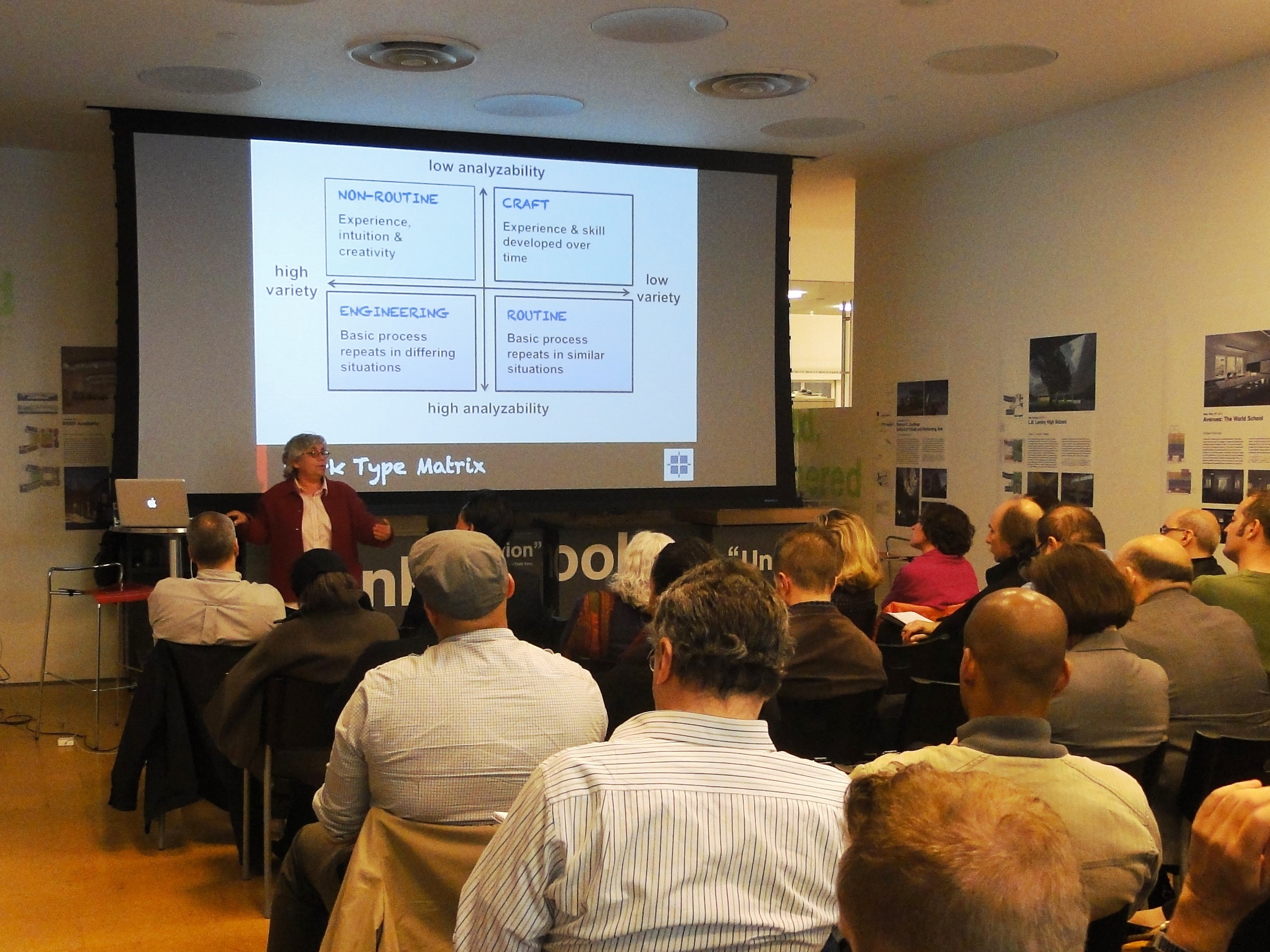by: Melissa Marsh
Thought leader and lifelong contributor to the business interests and intersections of architects and their practices, Rena M. Klein, FAIA, gave a talk called “Small Firm Practice in the New Normal: Learning from Chaos Theory” on 05.06.13. In the latest iteration of the Leading Architecture in a Changing World Series, organized by the AIANY Professional Practice Committee, Klein addressed a wide range of topics, from productivity and profitability in small practices, and national demographic trends and their impact on the architecture talent pool, to new business models for delivering architecture in a new economy.
Although Klein was new to the series, her topic presented several important overlaps with previous speakers, including human resource strategies for a new economy: how to get the best performance from colleagues, employees, and collaborators who might not be in the same office or company. She even addressed what she sees to be the key components of the new normal: technology, demographics, economics, and competitive positioning.
Most importantly, Klein explained, is the use of systems thinking, which can help us understand how components of systems influence one another within the whole. This can be seen in companies where systems consist of people, structures, and processes that work together to make an organization. By examining these relationships, business owners and operators will be able to see, understand, and react to trends. Some key aspects of this include noticing patterns, seeing whole systems, and considering multiple impact points.
Klein also presented several approaches to help small practices address firm profitability. Top among these is an exploration of routine versus non-routine work within offices, and the potential drain on profitability when routine aspects of a business are not identified and standardized. She stressed that failing to standardize and systematize processes can lead to stagnant profitability despite increased gross revenues.
An additional barrier to effective business management might be the “personality of the architect,” which in marked by constant creativity and problem solving. Often, we take a business process that could be standardized, and thus most cost-effective and, instead, try to ”innovate.” Some of this insight comes from research by Judith Blau and her book Architects and Firms: A Sociological Perspective of Architectural Practices (1987). Typical motivational and engagement drivers include: opportunities to design interesting projects, autonomy and control over one’s own work, recognition by peers and the public, optimal variety in challenge and learning opportunities, and alignment of values and goals with of co-workers and clients, as well as feeling respected and well-liked by coworkers, consultants, and clients.
Through case studies, Klein focused on the real-world implications of some of these trends. Representing shifts between integrated and fragmented industry models, she highlighted Miami-based architect Gustavo Berenblum, AIA. Berenblum actively pursues signature architects to partner with as executive architect. He has also worked with an organization that is offering a franchise model for architects called Transforming Architecture. In considering the shift from generalist to specialist models, she provided examples of emerging businesses in BIM technology consulting and evidence-based design research.
Finally, Klein addressed historic and emerging trends in our profession, from the number of women educated in architecture versus practicing architecture, to the short- and long-term impact of the recession on our business. Of particular note is that since 2009, the total number of sole architect practitioners has increased, while every other size of firm has decreased; the greatest is in firms of 100 people and over. Now more than ever, the smallest firms are a substantial mode of operation for architectural professionals.
Melissa Marsh is a workplace strategy and change management consultant with an architectural education. She recently founded her own company, Plastarc, Inc. She is regular contributor to e-Oculus focusing on topics relating to design business practice and next generation professionals, and can be reached at melissa@plastarc.com.
Event: Leading Architecture in a Changing World Series: Small Firm Practice in the New Normal: Learning from Chaos Theory
Location: Center for Architecture, 05.13.13
Speaker: Rena M. Klein, FAIA, Founder, RM Klein Consulting, and Executive Editor of AIA’s The Architect’s Handbook of Professional Practice, 15th edition (Nov. 2013 release)
Organizers: AIANY Chapter Professional Practice Committee and AIANY staff









